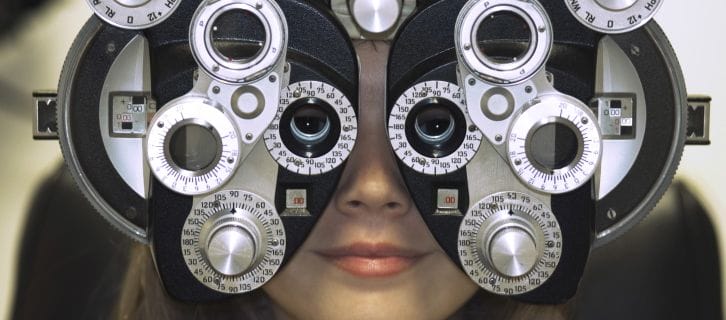The importance of good eye health is often underappreciated in the working environment. Many conditions or diseases of the eye — such as cataracts, disorders affecting the retina, dry eyes and uncorrected refractive conditions — can have a substantial impact on employee productivity and well-being. Fortunately, there is much that employers can do to maintain an eye-friendly working environment and promote eye health among their employees.
Most problems with the eyes occur gradually over time — so gradually, in fact, that people may not even attribute their problems to failing vision. Cataracts are a good example of this. The leading cause of vision loss for people over the age of 40, cataracts occur when the lens of the eye, normally clear, very gradually starts to become cloudy. Another condition associated with aging is presbyopia, which also develops slowly as the lens of the eye becomes thicker and less flexible, losing its ability to focus light onto the retina. The retina itself can break down over time, such as with a condition known as age-related macular degeneration, or AMD. AMD is another leading cause of blindness in older people.
Dry eye disease can also affect work performance. This occurs when there are not enough quality tears to properly lubricate the eye. As a result, eyes can become itchy, painful and irritated. Vision may become blurry or eyes may water excessively. Left untreated, dry eye disease can lead to damage of the cornea.
The effect of conditions such as these on work performance can be subtle at first. Employees may experience difficulty seeing and reading in reduced lighting. Driving in poorly lit areas can become increasingly challenging. They may find themselves unable to look at computer screens, read documents or do close work for as long as they used to without experiencing problems such as headaches or eyestrain. Glare from sunlight, overhead lighting or headlights may bother them more than before. The added effort and strain can make them feel sleepy or irritable.
Also read: Vision is the Must-Have Benefit for 2019
Certain work environments can contribute to the development of eye disease. For instance, exposure to blue light from the screens of electronic devices or from prolonged exposure to sunlight from working outdoors without proper eye protection can contribute to the development of cataracts or AMD. Environments with diminished ambient humidity or prolonged computer use can contribute to symptoms of dry eyes. Overhead lighting or indirect sunlight shining on the work surface can also cause symptoms of dry eyes or eyestrain.
When doing their jobs, or simply being on the job site, causes increasing discomfort, employees may avoid work, or take more and longer breaks. They may not even realize their discomfort is due to eye issues. Many may attribute these changes to other health problems, such as depression or poor sleep, or they may chalk it up to losing interest in their work or simply getting older. If these issues are left unchecked for long enough, failing vision can lead to serious workplace accidents and permanent damage to the eyes may occur.
Addressing environmental contributors to eye disease and discomfort can help minimize the eye problems that affect work performance. Ensure that indoor air is clean and properly humidified. Evaluate lighting and determine what changes can be made to minimize glare on surfaces. Computers and other light-emitting screens can be fitted with filters that block blue light. Employees who work outdoors should be provided with proper eye protection, such as sunglasses that effectively block UV radiation.
But the most effective way of maintaining good eye health is by encouraging employees to undergo a comprehensive annual eye exam. This will identify problems early so that employees maintain a high level of job performance, the risk of accidents due to vision impairment is reduced, and eye conditions are treated promptly, possibly staving off permanent vision loss. An annual comprehensive eye examination may also catch conditions such as diabetic retinopathy, hypertension and vascular problems that can impact both eye and overall health long before the condition causes a vision symptom. People are three times more likely to get an annual eye exam than an annual physical, making the eye exam an even more important touchpoint between employees and preventive health care.
To encourage employees to undergo an annual eye exam, make sure that vision care coverage is included in their health benefits package. It can also be helpful to hold eye health awareness seminars or other events to teach employees about the importance of taking care of their eyes.


